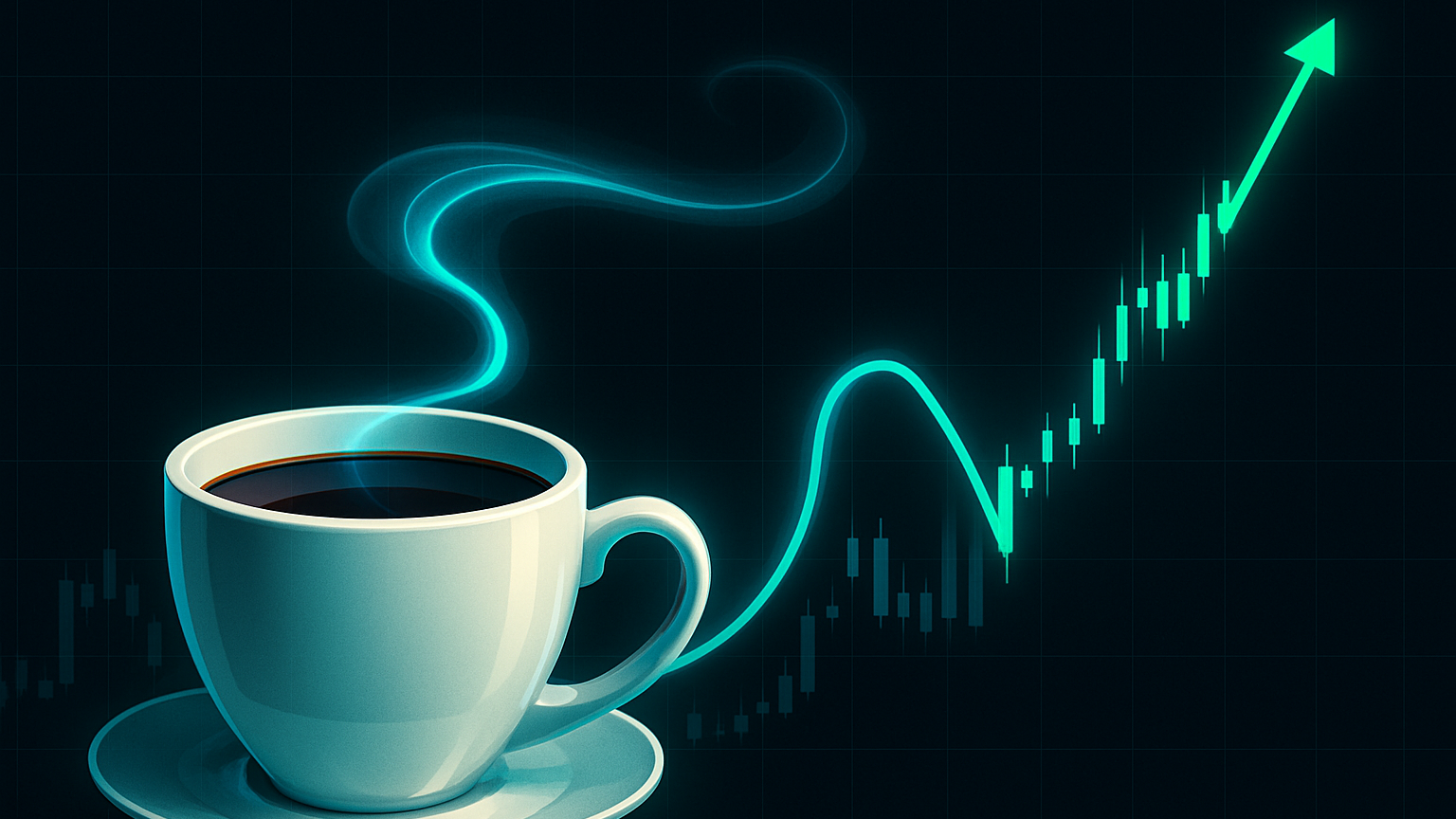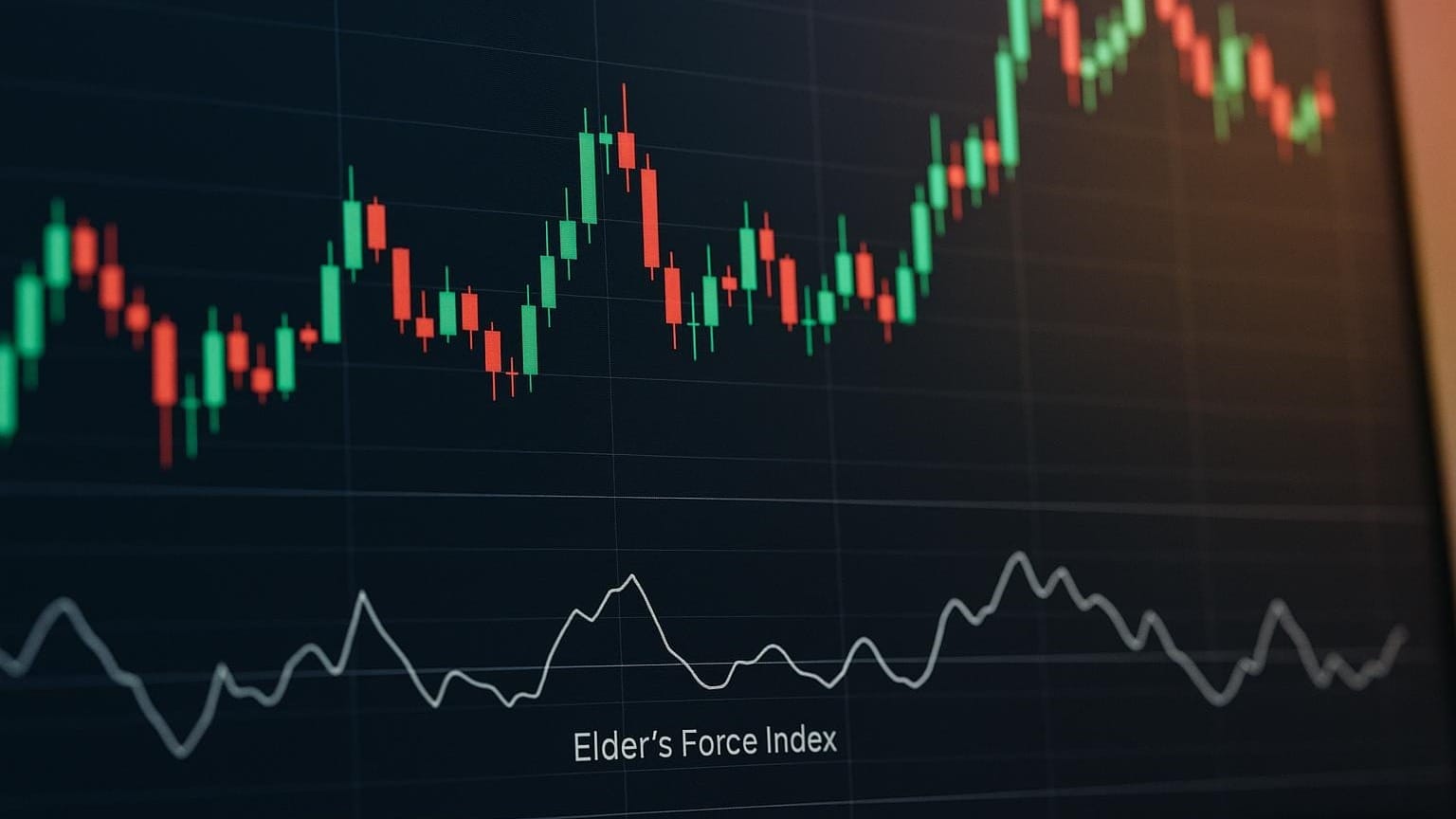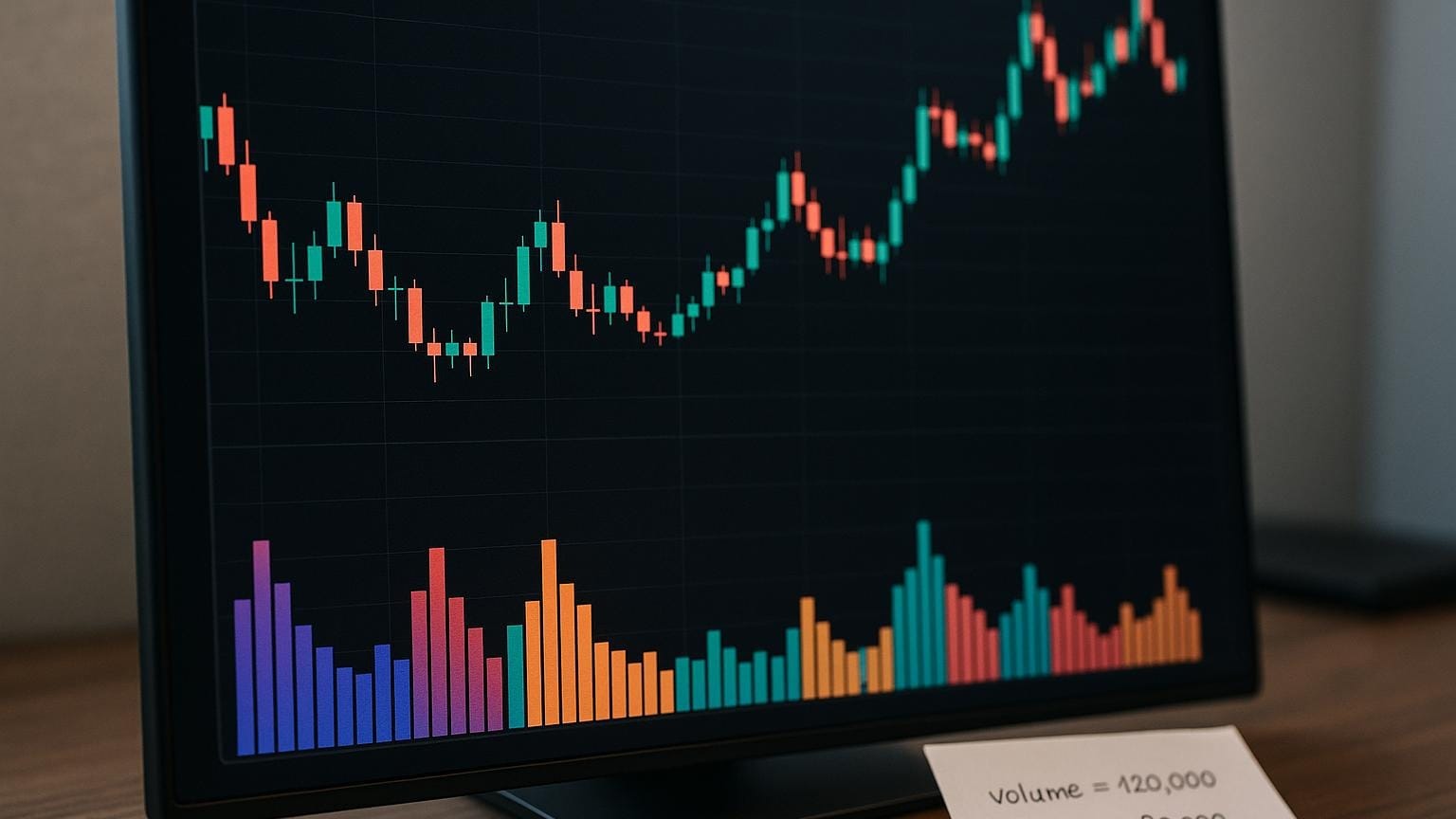Learn the top mistakes to avoid when trading the cup and handle pattern to enhance your trading success and decision-making.
The cup and handle pattern is a powerful trading signal, but many traders make costly mistakes when analyzing it. Here are the five most common errors and how to avoid them:
- Wrong Pattern Recognition: Misidentifying the pattern (e.g., confusing it with double bottoms or rounding bottoms). Look for a U-shaped cup, a downward-sloping handle, and proper depth and timeframes.
- Missing Volume Signals: Ignoring volume trends. Ensure volume decreases during the cup formation, remains low in the handle, and surges during the breakout.
- Early Trade Entry: Entering too soon before confirmation. Wait for a breakout above the handle's resistance with strong volume.
- Poor Stop Loss Setting: Placing stops too tight or at obvious levels. Use volatility-based stops and adjust them as the trade progresses.
- Market Trend Neglect: Overlooking the broader market trend. This pattern works best in strong uptrends, avoid it during corrections or bearish markets.

Quick Comparison
| Error | What to Watch For | How to Avoid It |
|---|---|---|
| Wrong Pattern Recognition | U-shaped cup, downward-sloping handle | Validate depth, timeframe, and shape before trading |
| Missing Volume Signals | Volume surge during breakout | Monitor volume trends throughout the pattern |
| Early Trade Entry | Breakout above resistance with strong volume | Wait for clear confirmation signals |
| Poor Stop Loss Setting | Stops too tight or poorly placed | Use volatility-based stops and adjust dynamically |
| Market Trend Neglect | Weak patterns in corrections or bearish markets | Align trades with strong uptrends and confirm market context |
10 Common Mistakes of Trading Cup and Handle Pattern
1. Wrong Pattern Recognition
Misinterpreting the seemingly simple cup and handle pattern is a common and costly mistake in trading. This formation is often confused with others like double bottoms or rounding bottoms, but each has distinct characteristics.
For the cup and handle, the cup must form a U shape, not a V shape. Research shows that U-shaped bottoms provide a much stronger signal compared to their sharper V-shaped counterparts.
Here is a quick way to differentiate these patterns:
| Pattern Type | Key Characteristics | Signal Type |
|---|---|---|
| Cup and Handle | U-shaped cup, downward-sloping handle, seven or more weeks formation | Bullish continuation |
| Rounding Bottom | U-shaped formation without a handle | Bullish reversal |
| Double Bottom | W-shaped pattern with sharp bottoms | Bullish reversal |
Validating the Cup and Handle Pattern
To confirm a legitimate cup and handle setup, focus on these parameters:
- The cup depth should range between 12 percent and 35 percent of the prior advance.
- The handle must form in the upper half of the cup.
- The entire formation should take at least seven weeks to develop.
- The handle should slope slightly downward, not upward.
"The cup and handle pattern is one of the most reliable bullish setups in trading." – Nick Schmidt, Co-founder of TraderLion and Deepvue
Key Tips for Traders
- Patience is critical. Let the pattern fully develop before making your move.
- The handle retracement should stay below one third of the cup advance.
- Look for a volume surge, a breakout is often confirmed by a 40 to 50 percent increase over the average daily volume.
2. Missing Volume Signals
Volume analysis plays a key role in validating the cup and handle pattern, yet it is often overlooked. Many traders focus on price movements alone, missing critical volume clues that can indicate the strength or weakness of the pattern.
Volume Trends Across the Pattern
The cup and handle pattern is typically accompanied by specific volume behaviors during its formation:
| Formation Stage | Expected Volume Behavior | Warning Signs |
|---|---|---|
| Cup Decline | Volume decreases | Sudden volume spikes |
| Cup Bottom | Below-average volume | Irregular volume increases |
| Cup Rise | Volume gradually increases | Consistently low volume |
| Handle | Lower volume than the cup | Volume higher than during the cup |
| Breakout | Above-average volume | Lack of a significant volume increase |
Key Volume Signals to Watch
During the cup decline, volume should taper off, signaling reduced selling pressure. As the price starts climbing toward prior highs, a steady rise in volume reflects increased buying interest, which supports the pattern validity.
Breakout Volume: What to Look For
A breakout with strong volume is crucial for confirming the pattern. To validate a breakout:
- Look for a clear move above the handle resistance.
- Ensure trading activity is well above average.
- Watch for a sustained increase in volume rather than a short-lived spike.
Steps for Volume Confirmation
- Cup Volume Behavior – During the cup formation, monitor for a steady decline in volume, particularly at the base.
- Handle Volume Check – Confirm that the handle forms with lower volume compared to the cup, indicating a healthy consolidation phase.
- Breakout Volume Surge – Wait for a breakout accompanied by a noticeable rise in volume before taking any positions.
Using LuxAlgo indicators can simplify this process. They offer real-time volume tracking and align with the checkpoints above, helping you make more informed decisions.
3. Early Trade Entry
Jumping into a cup and handle pattern too soon can be a costly mistake. Many traders rush to catch a move early, only to find themselves exposed to unnecessary risk because the pattern was not fully confirmed.
Recognizing When the Pattern Is Complete
To trade this pattern effectively, you need to wait for specific signals that confirm its validity:
| Pattern Stage | What to Look For | What to Avoid |
|---|---|---|
| Handle Formation | One to four weeks of steady consolidation | Weak or erratic price movement |
| Price Action | A close above the handle resistance | A weak or indecisive breakout |
| Volume Profile | A clear surge in volume during the breakout | Low or declining volume |
| Time Frame | One to six months for the full pattern to form | Patterns that seem rushed or incomplete |
How to Time Your Entry
The ideal entry point is when the price breaks above the neckline and closes there, signaling the start of a bullish move. This confirmation is crucial, especially since the pattern has been reported to have a 95 percent success rate in bull markets when executed correctly. Patience here pays off.
Steps to Validate Your Entry
- Handle Formation
- Ensure the handle consolidates for one to four weeks.
- Look for declining volume during this phase.
- Make sure the price stays within the handle boundaries.
- Breakout Confirmation
- Watch for strong bullish candlestick patterns.
- Confirm that the price closes above the resistance level.
- Look for a significant surge in volume to back the breakout.
- Trend Alignment
- Check the 50-day and 200-day moving averages for consistency.
- Ensure the broader market trend aligns with your trade.
For additional precision, consider using LuxAlgo indicators. They can help you spot false breakouts and confirm legitimate opportunities by analyzing real-time volume and price action.
Finally, set a stop-buy order slightly above the handle upper trendline. Remember that this pattern typically takes one to six months to develop on daily or weekly charts. A disciplined approach like this can significantly increase the likelihood of a successful trade.
4. Poor Stop Loss Setting
Setting stop losses correctly is a key part of successful cup and handle trading. Many traders place stops too tight or choose levels without proper reasoning, leading to premature exits.
Understanding Stop Loss Dynamics
"If you make an entry, you should be able to tell about the stop loss level, 'If the price went above or below this level, then my reasons for entry would be disproved by the market, thus my current analysis would be wrong.'" – FBS Analyst Team
Optimal Stop Loss Placement
| Stop Loss Component | Best Practice | Common Error |
|---|---|---|
| Position | Slightly below the handle lowest valley | Placed directly at the support level |
| Buffer Zone | Add a small margin below the trendline | No margin for flexibility |
| Volatility | Use the ATR indicator to guide placement | Relying on a fixed pip or dollar amount |
| Adjustment | Adjust stops as the trade becomes profitable | Keeping stops static throughout the trade |
Dynamic Stop Loss Management
Beyond initial placement, it is important to adjust stop losses as market conditions change. Using the ATR (Average True Range) indicator helps you set stops that account for current volatility. This approach protects your trade while giving the price room to move naturally.
Common Stop Loss Mistakes to Avoid
- Placing stops at obvious support levels
- Failing to adjust stops during favorable price moves
- Using the same stop loss method across different market scenarios
LuxAlgo indicators can simplify this process by analyzing price action and volatility patterns, helping traders avoid being stopped out too early while maintaining solid risk control.
Risk Management Guidelines
- Set initial stops slightly below the handle lowest point.
- Use volatility-based stops when entering trades far from the current price.
- Apply time-based stops if the trade does not move in your favor within a reasonable period.
- Regularly review and adjust stops to match evolving market conditions.
5. Market Trend Neglect
Overlooking market trends can undermine cup and handle trades. It is important to focus not just on the pattern but also on the broader market environment.
Understanding Market Context
Cup and handle patterns tend to work best in strong uptrends. Market corrections often lead to weaker or failed breakouts.
Evaluating Market Conditions
| Market Condition | Pattern Success Potential | Suggested Trading Strategy |
|---|---|---|
| Strong Uptrend | High | Consider larger positions |
| Sideways Market | Moderate | Use tighter risk controls |
| Bearish Market | Low | Avoid trades or limit exposure |
| Market Correction | Weak breakouts likely | Wait for the trend to stabilize |
Using Technical Tools for Confirmation
LuxAlgo indicators can help you analyze trends across different timeframes, confirming the overall market direction and pattern reliability.
- Primary Trend Analysis: The pattern is most effective when it aligns with the primary market trend. Use multiple timeframes to assess trend direction and strength.
- Volume Trends: Examine volume patterns to gauge market momentum. LuxAlgo indicators can help validate whether the cup and handle pattern aligns with overall market activity.
Adjusting Risk Based on Market Trends
- Take smaller positions when market trends are uncertain or counter to the pattern.
- Set stricter entry criteria if market support for the pattern is weak.
- Use moving averages and momentum tools to confirm the trend direction.
Conclusion
Trading the cup and handle pattern effectively relies on precise analysis and strategy. When executed well, this pattern can deliver a 2.5 : 1 return-to-risk ratio, making accurate identification a key factor for achieving solid results.
Volume plays a critical role in validating the pattern. Look for lower volume during the cup formation, minimal volume during the handle, and a noticeable volume increase at the breakout. These signals help confirm the pattern reliability. Additionally, placing stop-loss orders carefully and sizing positions appropriately can limit losses and protect your trades.
Leveraging technology can enhance your analysis. LuxAlgo indicators can confirm patterns across different timeframes and track volume trends, giving you an extra edge in your trading decisions.
To succeed with this pattern, combine technical knowledge with disciplined execution. Continuously refine your strategy to stay aligned with market changes, and focus on mastering the essentials: pattern recognition, volume analysis, entry timing, stop-loss placement, and understanding market trends.
FAQs
How can you spot a real cup and handle pattern?
To distinguish valid cup and handle patterns from misleading ones, pay attention to these points:
- Pattern Shape: Look for a U-shaped cup instead of a sharp V bottom. The cup generally takes one to six months to form, while the handle develops over one to four weeks. Ensure the handle appears as a lateral or downward channel in the upper half of the cup.
- Volume Trends: Check for the expected volume behavior, especially a noticeable volume increase during the breakout.
- Handle Details: The handle retracement should stay below 50 percent of the cup depth and must form in the upper section of the pattern.
- Breakout Signals: Act only when there is a clear breakout above the handle resistance, accompanied by increasing volume.
Using longer timeframes can increase accuracy. LuxAlgo indicators can confirm patterns across multiple timeframes and help track volume trends effectively.








